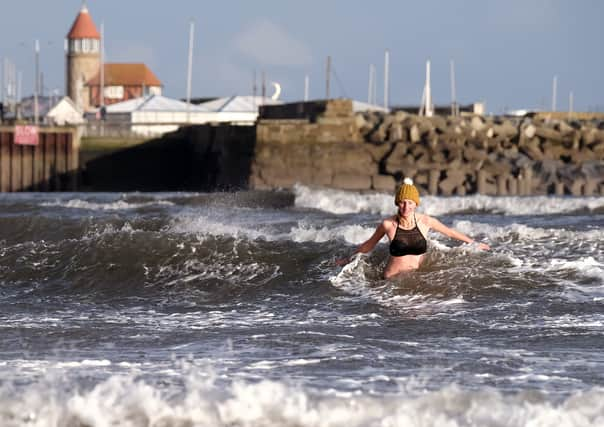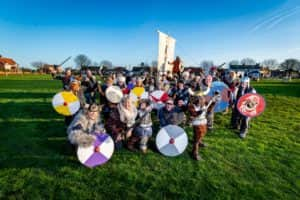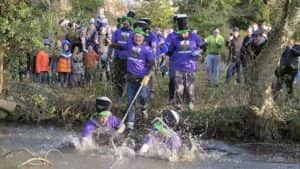New Year traditions in Yorkshire - including North Sea dip and Viking Festival


Yorkshire folk have unique ways of seeing in a new year. We take a look at how residents of the county will be welcoming 2022.
RabbitsJust as the clock is about to strike midnight on New Year’s Eve, the legend goes that you should say “black rabbits, black rabbits, black rabbits”.Then, as the clock chimes 12, say “white rabbits, white rabbits, white rabbits”.This is said to bring good luck.
Advertisement
Hide AdAdvertisement
Hide AdNew Year’s Eve, Flamborough Fire FestivalViking tradition states that the air could be cleansed of the old year’s spirits with fire, and this New Year’s Eve festival in Flamborough, East Yorkshire, will see local Vikings do just that.The event is held on the village green and starts at 10.30pm.


It features the burning of the Viking longship, Flamborough Fireballs, Viking parade.Go in a Viking costume, a torchlight procession and a fireworks spectacular at midnight.
New Year’s Day Dip, ScarboroughOn New Year’s Day, dippers on South Bay beach to take part in the dip organised by Scarborough Lions.Registration for the event opens at 10.30am and takes place at the Scarborough Lions minibus, which will be clearly signposted.Fancy dress judging will happen at 12.30pm, and the dip will start at 12.45pm.Changing facilities will be available in the Scarborough Rowing Club in the seafront.There are prizes for the best team costume, the best overall single costume and the best child aged under 11 costume.
The BellsIt is a York tradition to gather around The Minster at midnight to listen to the bells chime in the New Year.
Advertisement
Hide AdAdvertisement
Hide AdTug of war, East and West Ayton, North YorkshireAnother tradition on New Year’s Day is the tug of war between East and West Ayton villagers over the River Derwent.


It gets under way at 11am and is followed by a talent show at the Forge Valley Inn at 1.30pm. The talent show at the pub will raise money for St Catherine’s, MacMillan and Mind.
First FootingIt is believed that the act dates back to the days of the Vikings, when a blonde-haired man arriving heralded bad luck.It is considered good luck to walk out the back door and in through the front door but you must start the journey before midnight, arriving at the front door as midnight strikes. Leaving and entering by the same door are frowned upon.The act is known in Manx Gaelic as Quaaltagh and similar traditions take place across Europe.The earliest mention of it taking place in Hull was on New Year’s Day in the year 1895. It was said that the act had been witnessed across Hull and was a popular superstition in the North.First Footing verseOn New Year’s Day 1896 it was said that the act had already evolved in Hull, and that a verse was said when local folk walked into the house ...A guid New Year to aim and a’An’ money may ye see,An’ durin’ a’ the years to come,Oh, happy may ye be.
First Footing itemsA number of different theories exist as to why the items are carried into the household, and these items change from location to location.
Advertisement
Hide AdAdvertisement
Hide AdIt is claimed that the “First Footer” must have a drink with them as a sign that the house will have drink all year round.
They must also carry greenery to bring a long life, coal/matches/lighter as a sign that the house will have fire/warmth all year round, money as a sign that they will have money all year round, and bread to signify food all year round.
It is claimed that the First Footer must wish the house and its occupants Happy New Year.
Lucky BodSome houses across Hull and other parts of East Yorkshire would approach dark-haired farm workers months in advance and pay them to carry out first footing.They would be hired by the lady of the house, and as such they would turn up on New Year’s Eve, knock on the front door, and sing ...Lucky Bod, lucky bod, chuck, chuck, chuck.The lady of the house would then welcome them in and they would join the festivities. If they brought a prosperous year ahead of them, they would be asked to return the following year. If not, a new farm hand was hired.
Advertisement
Hide AdAdvertisement
Hide AdWatch NightWatch Night services were held at Hull churches with the earliest mention being made in 1867. They were annual events, held at midnight, to talk about the old year, and herald the New Year.Sermons usually began at 11.45pm and finished at 12.15am. At midnight the congregation would be in silent prayer as the church bells rang. The sermon would end and the deliverer of the sermon would wish the congregation a Happy New Year before they were allowed to leave the church.
Horns, sirens, whistles and buzzersSailors and seamen docked in Hull sounded ships’ bells, horns, sirens, and whistles. The tradition continues today.